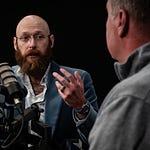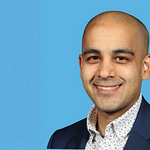Julie Garlikov is Chief Commercial officer at Sherlock Biosciences where they are developing over-the-counter diagnostics to put answers in the hands of consumers and empower them to make better health decisions.
Sherlock is developing two platforms - a disposable test and a reusable reader for home diagnostics. You can listen to the podcast for some details on the science. Let’s focus here on VOC in design.
Consumer-centric design for me is really all about embodying the methods of design thinking. Which is really making sure that you have a deep understanding and empathy for the user that you're designing for. And that you're solving a problem that they really have, and that you're doing it in a way that fits into their lifestyle or their needs.
This approach involves lots of research, qualitative and quantitative surveys, prototyping and ethnography.
Ethnography is more than observing how they use the product under development. One can learn from understanding how they use any product. Even the buying process is investigated. How do they shop for groceries?
When it comes to the product itself, do they understand the instructions for use?
More good stuff coming in future episodes. Don’t miss it.
Thanks for being here.
If you are developing a diagnostic for sexual wellness, you need to know not just the population dynamics of STIs but also people’s attitudes and beliefs around their sex lives. How do you reach people based on what you know about their behaviors? The results can be surprising.
… one thing that I uncovered in this attitudes and usage study that we did with almost 1300 people, young people in the U.S. was a group I'm calling, it's like a segment of the population, I would call frisky-riskies.
So frisky-riskies is a group that skews a little more male than female and they're a group that's engaging in behavior where they have more frequent casual partners, and they're not often using protection, and they know that they're not using protection, and they know that puts them at risk.
So, what's interesting is that they actually test more than other people because they use testing as a way to mitigate the things they're doing that they know are causing risk for them.
The ability to do home testing for all kinds of indications can certainly reduce the spread of infectious diseases and help move us forward to thinking about prevention and general wellness. In the case of STIs which can be asymptomatic in women, there are implications for fertility as well.
As I think about our conversation, it struck me that we all have an opportunity to make products that will improve people’s lives in some way. But what can we do to make the biggest impact possible with the products we make or the services we offer?
It seems like asking questions and observing the behaviors of our ideal customers offers a big return on a little extra effort.
I just realized last week’s episode reached a similar conclusion about how the early work in any project seems to have an outsized impact. It’s like painting a house. The quality of the outcome is all in the preparation.
Your deepest insights are your best branding. I’d love to help you share them. Chat with me about custom content for your life science brand. Or visit my website.
Intro Music stefsax / CC BY 2.5











